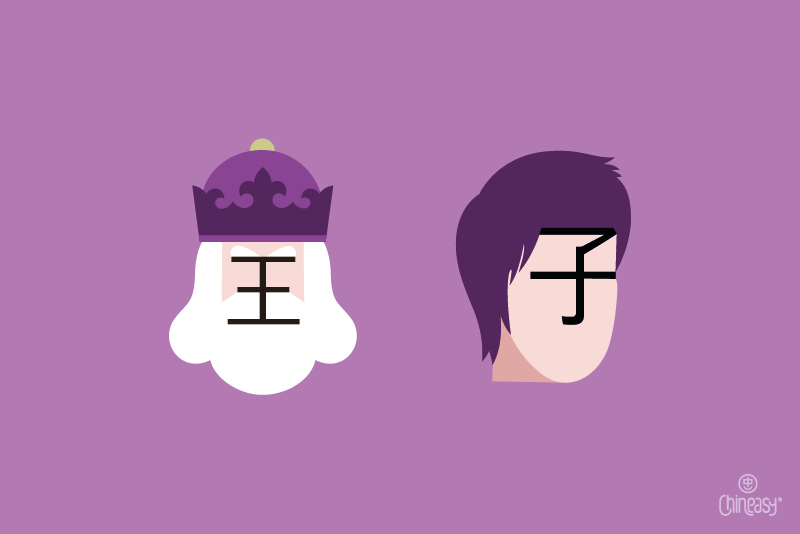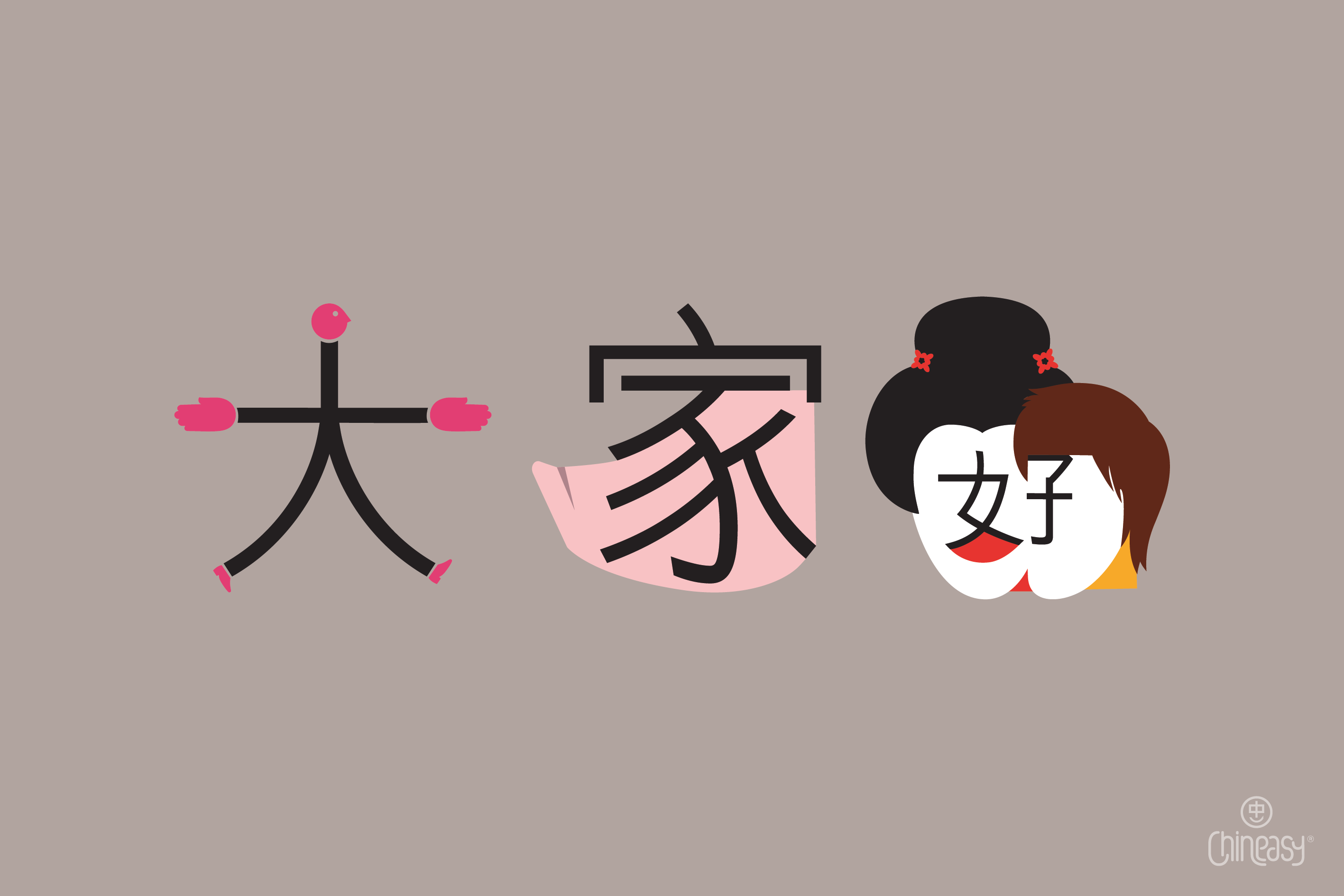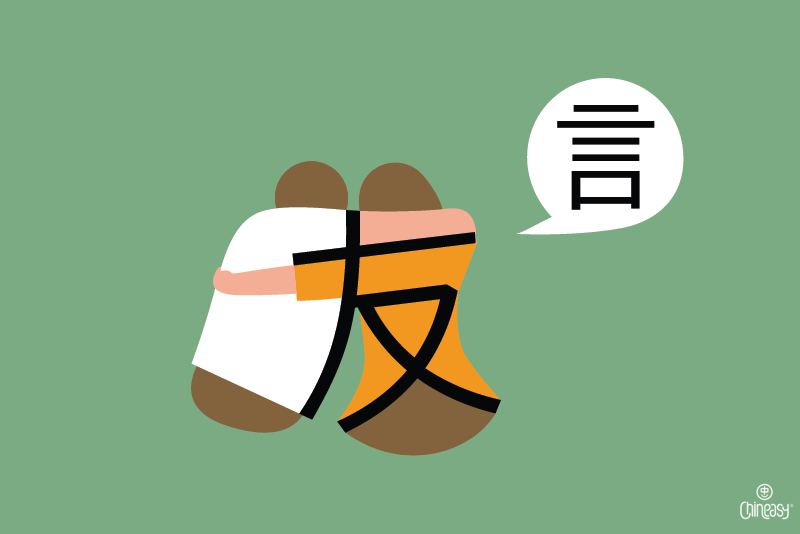Whether you’re a tea aficionado, a coffee enthusiast, or someone who enjoys an occasional tipple, familiarizing yourself with the Chinese vocabulary for popular beverages can be both fun and practical. In this beginner’s guide, we will explore 10 essential Chinese beverage words, covering everything from classic teas to popular alcoholic drinks. So, grab your favorite drink, sit back, and let’s dive into the world of common beverages in Chinese together!
Black tea 紅茶/红茶
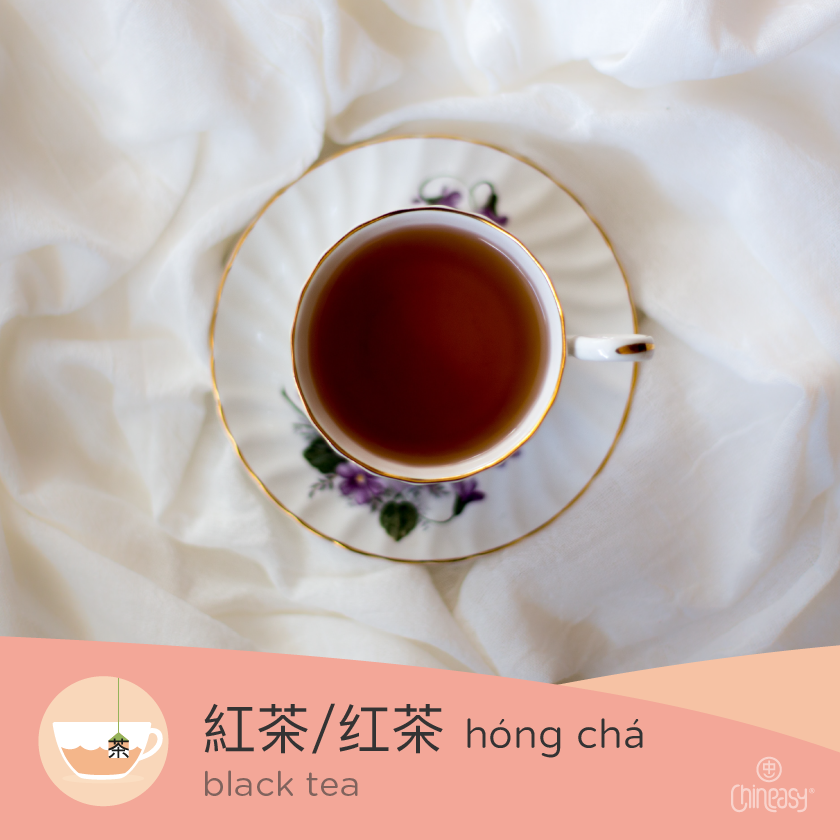
Black tea in Chinese is 紅茶/红茶 (hóng chá), literally, RED tea. The color 紅/红 (red) is derived from the reddish color of the brewed tea, which appears more red than black. However, the English term “black tea” refers to the color of the tea leaves themselves.
Green tea 綠茶/绿茶
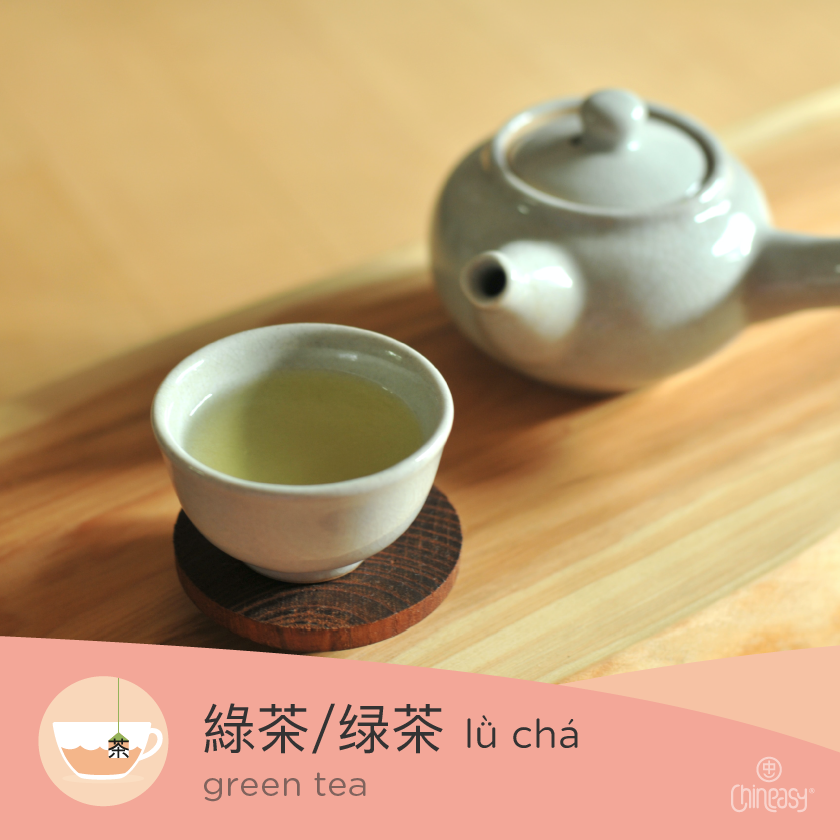
綠茶/绿茶 (lǜ chá; green + tea) is one of the oldest and most popular types of tea in China. Drinking green tea has many health benefits, such as improving brain function, protecting against cancer, lowering the risk of heart disease, etc.
Milk tea 奶茶
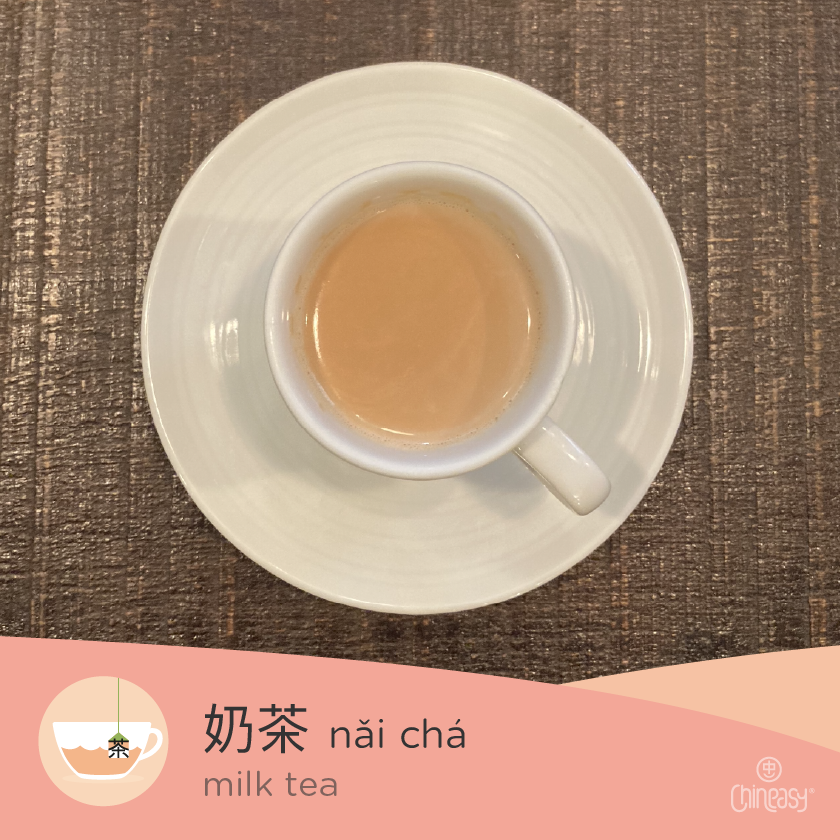
Do you usually enjoy your cup of tea with or without milk? This can be a great debate for tea enthusiasts. However, certain teas can taste milder when paired with a splash of milk, such as 紅茶/红茶 (black tea) or 伯爵茶 (Earl Grey; bójué chá). When adding milk to your tea, you can use the term 奶茶 (nǎi chá; milk tea) to refer to your beverage. 奶 (nǎi) is short for 牛奶 (niú nǎi), meaning cow’s milk.
Now, can you guess what 奶綠茶/奶绿茶 (nǎi lǜ chá; milk + green + tea) means? It refers to milk tea with a green tea base instead of black tea, which is a more common choice for tea drinkers. 奶綠茶/奶绿茶 is a very popular beverage in China, especially during summer, as it can be served cold and offers a refreshing taste on hot days.
✨ If you want to learn more everyday Chinese words, download our Chineasy app for free! Available in the App Store and Play Store! ✨
Matcha 抹茶
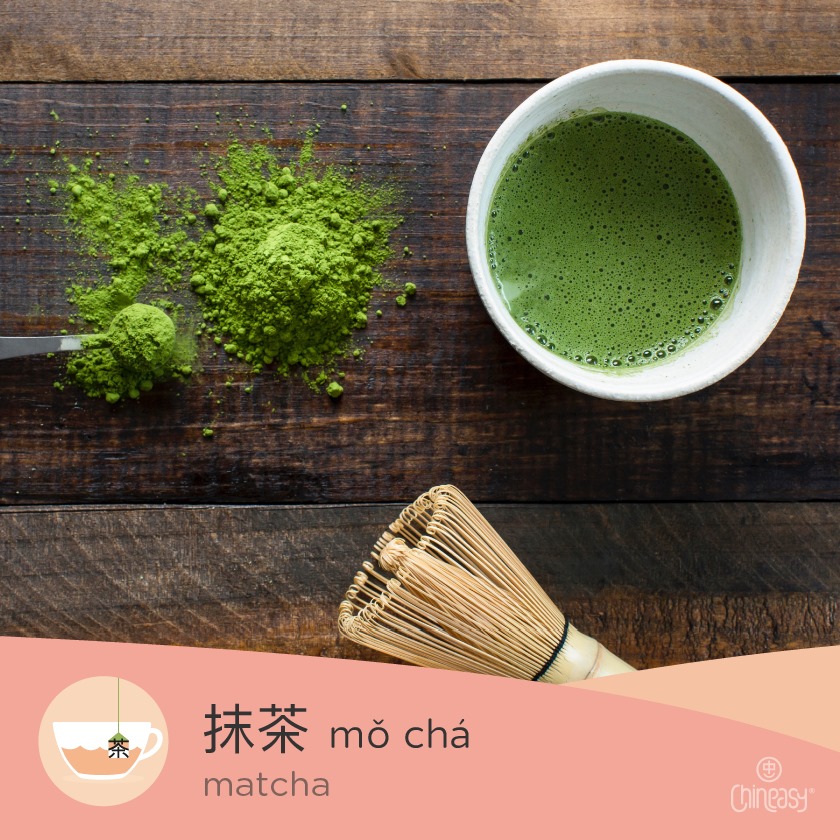
Distinct from other teas, 抹茶 (mǒ chá) comes in powdered form rather than as leaves. Its Chinese term closely resembles its English counterpart, “Matcha.” In addition to being used for tea, 抹茶 is a popular ingredient in desserts, such as 抹茶蛋糕 (matcha cake; mǒchá dàngāo) and 抹茶冰淇淋 (matcha ice cream; mǒchá bīngqílín).
Coffee 咖啡
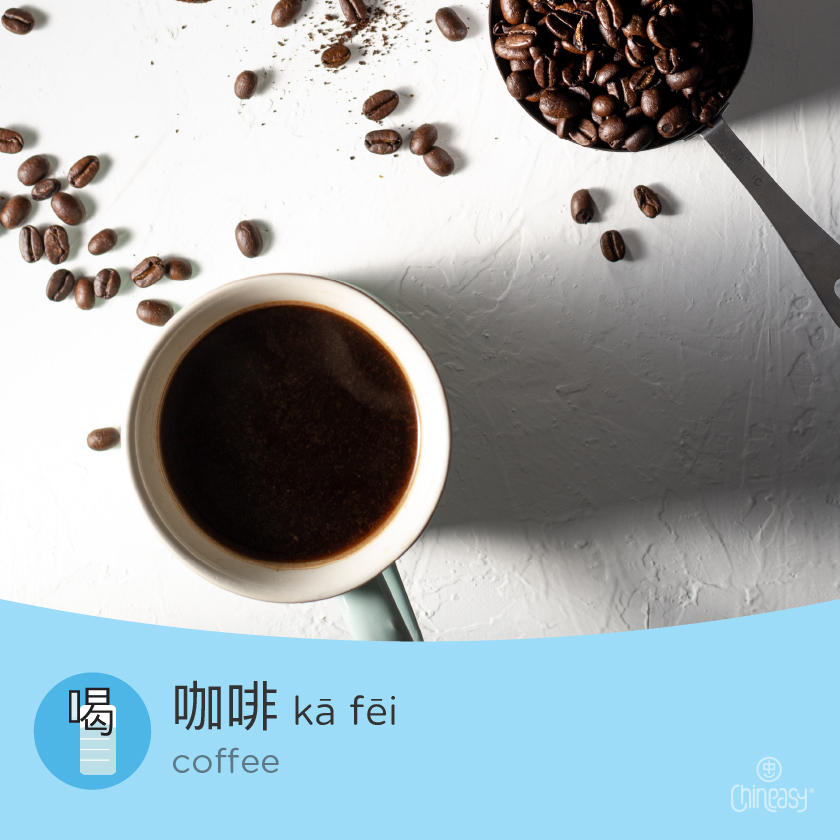
咖啡 (mā mī) is a loanword derived from the English term “coffee.” Here are some bonus words to specify the type of coffee you prefer:
- 黑咖啡 (hēi kāfēi; black + coffee)
- 白咖啡 (bái kāfēi; white + coffee)
- 冰咖啡 (bīng kāfēi; ice + coffee)
As we venture beyond non-alcoholic beverages, it’s time to explore some popular Chinese terms related to alcoholic drinks. Whether you enjoy them yourself or just want to expand your vocabulary, the following 5 Chinese beverage vocabulary words will come in handy.
Red wine 紅酒/红酒
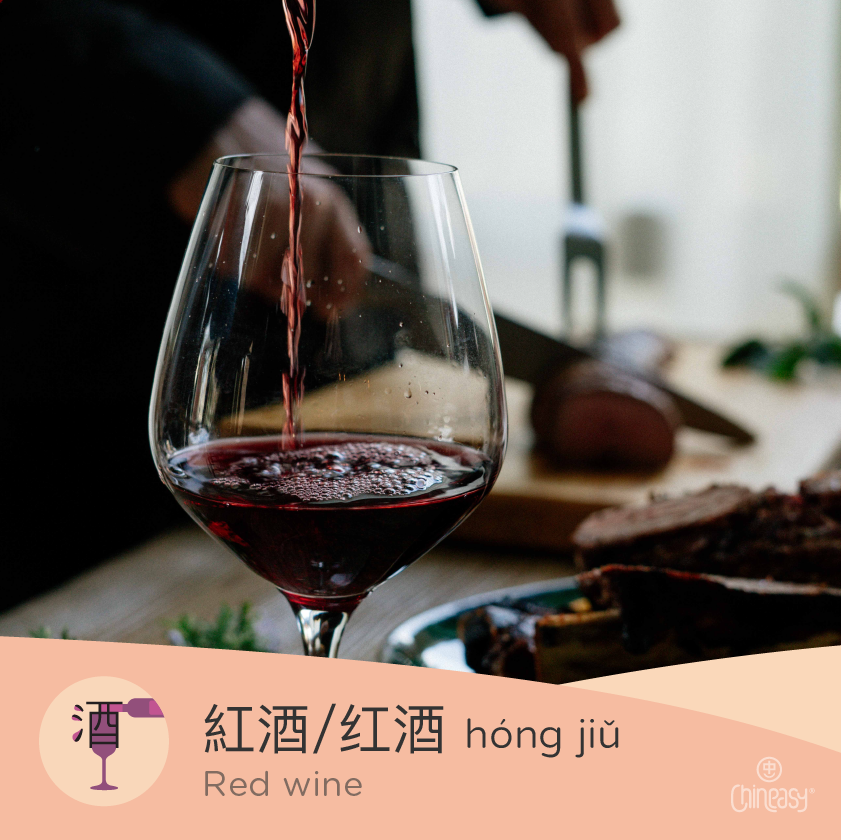
Imported wines, particularly 紅酒/红酒 (hóng jiǔ; red + wine), have gained popularity in China due to the color red traditionally symbolizing luck, joy, and happiness.
It’s important to note that 白酒 (bái jiǔ; white + wine) does not translate to “white wine.” Instead, 白酒, also known as baijiu, refers toa distilled alcoholic drink made from fermented sorghum. To specify “white wine” in Chinese, you should use the term 白葡萄酒 (bái pútao jiǔ; white + grape + wine).
Beer 啤酒
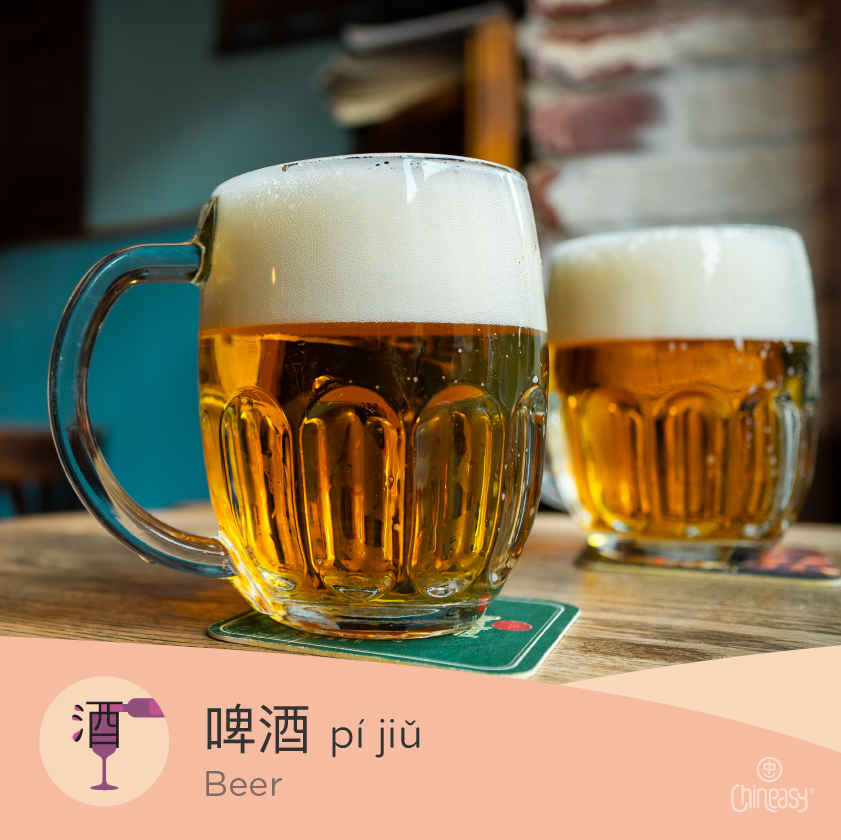
Beer, bière, birra, bier – notice a pattern among these words? They all start with the letter “b” and share a similar sound for their first syllable, “bi.” In Chinese, this sound was borrowed and the character 啤 (pí) was created to match it. Combining 啤 (pí) with 酒 (jiǔ), which means “alcohol” or “wine,” we get 啤酒 (píjiǔ), the Chinese word for “beer.” This linguistic adaptation illustrates the universal appeal of this popular beverage.
Speaking of beer’s popularity, one of the most famous brands in China is Tsingtao Beer (青島啤酒/青岛啤酒; qīngdǎo píjiǔ). As one of the earliest beer producers, it is based in Qingdao, Shandong province. The brand has also gained international recognition and is available in many Western countries.
Sake 清酒
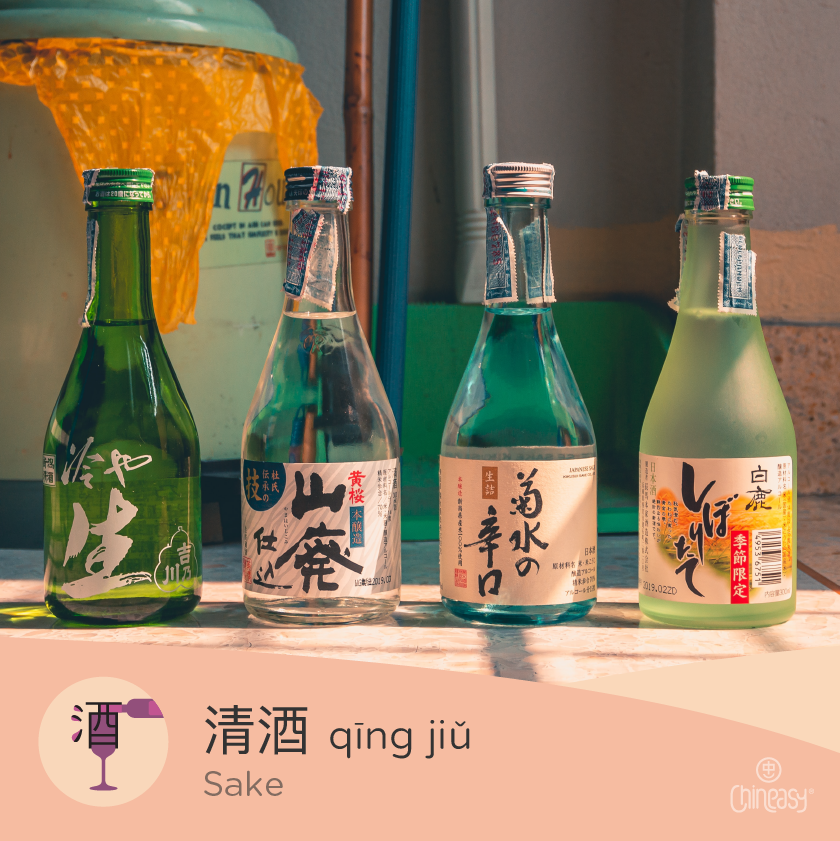
清酒 (qīng jiǔ) is a naturally fermented alcoholic drink made from rice. Unlike the previously mentioned alcoholic beverages, sake is created using a combination of rice, water, yeast, and koji-kin during the brewing process. Koji-kin, a special type of mold with the scientific name Aspergillus oryzae, is also used in soy sauce production.
The Chinese term 清酒 (clear/pure + alcohol/wine) is derived from the drink’s clarity. Sake is often associated with Japan (日本; rì běn), leading the Chinese to sometimes refer to it as 日本酒 (literally, Japan wine) or 日本清酒 (Japan sake).
Whiskey 威士忌
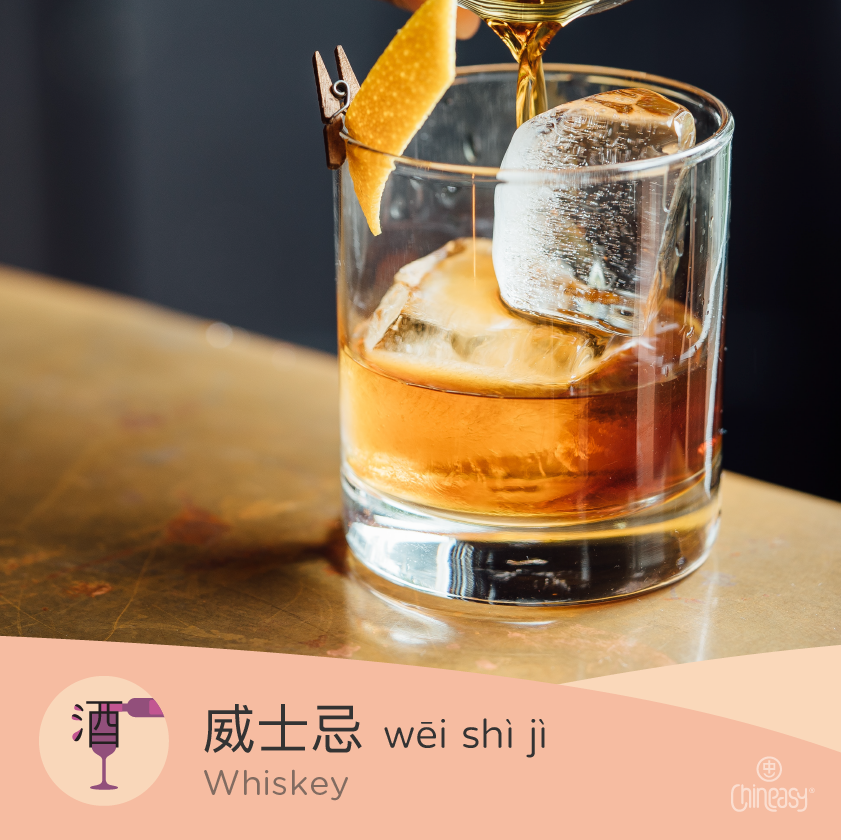
威士忌 (wēi shì jì) is a loanword derived from the English term “whiskey.” This distilled alcoholic beverage has a growing market in China, particularly in Tier 1 cities such as Shanghai (上海), Beijing (北京), and Xi’an (西安). Some popular types of whiskey among Chinese consumers include Scotch whiskey (蘇格蘭威士忌/苏格兰威士忌; sūgélán wēishìjì), Irish whiskey (愛爾蘭威士忌/爱尔兰威士忌; àiěrlán wēishìjì), and American bourbon (美國波本威士忌/美国波本威士忌; měiguó bōběn wēishìjì). As the Chinese market for whiskey continues to expand, more varieties and brands are being introduced to cater to the evolving tastes of consumers.
Champagne 香檳/香槟
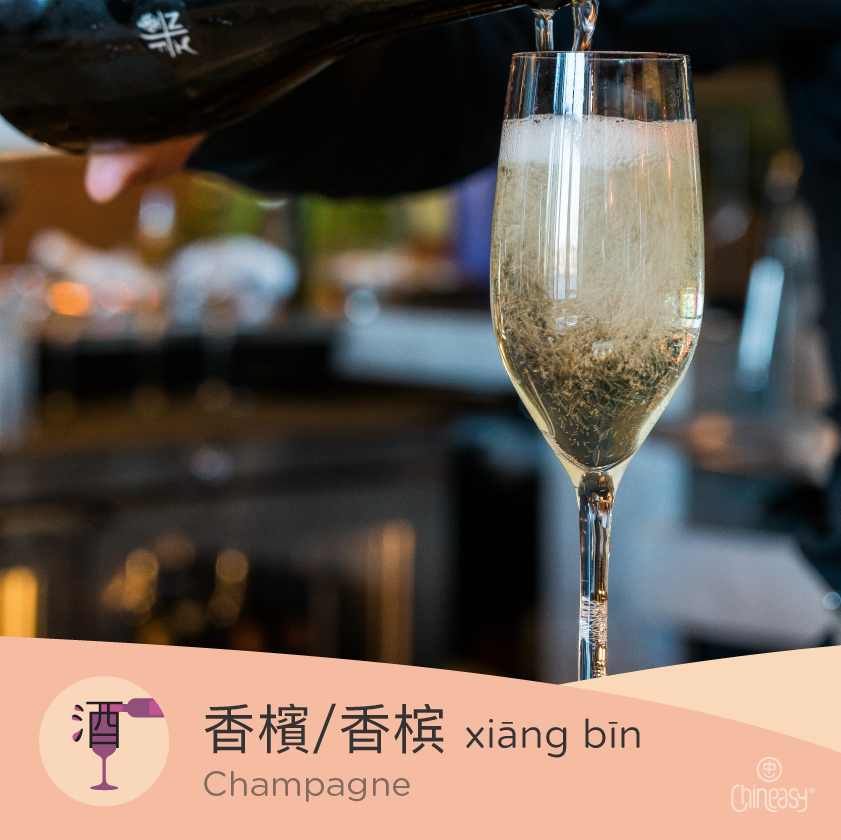
Similar to the Chinese word 威士忌, the origin of 香檳/香槟 (xiāng bīn) is a phonetic transliteration from its English counterpart, “champagne.” Although not as popular as 紅酒/红酒 (red wine) and 白葡萄酒 (white wine) in the past, 香檳/香槟 has been steadily gaining popularity in recent years in the Chinese market. This trend is particularly evident among young Chinese people with international education and a more open mindset. Champagne is often associated with celebrations and special occasions, making it an appealing choice for an increasingly affluent and globally connected younger generation in China.
Here you go! The 10 Chinese vocabulary words related to both non-alcoholic and alcoholic beverages. They showcase the richness and diversity of Chinese drinking culture. As you expand your vocabulary, you’ll also gain a deeper understanding of the cultural significance of these drinks, from the tea varieties to the growing popularity of imported alcoholic beverages. By mastering these terms, you’ll not only enhance your language skills, but also be better equipped to engage in everyday conversations.
